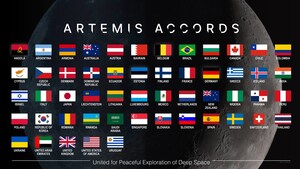WASHINGTON, Nov. 29, 2011 /PRNewswire-USNewswire/ -- NASA has selected 300 small business proposals to enter into negotiations for possible contract awards through the agency's Small Business Innovation Research (SBIR) and the Small Business Technology Transfer (STTR) programs.
(Logo: http://photos.prnewswire.com/prnh/20081007/38461LOGO)
These competitive awards-based programs encourage U.S. small businesses and research institutions to engage in federal research, development and commercialization. The programs enable teams to explore technological potential while providing the incentive to profit from new commercial products and services.
The SBIR program selected 260 proposals, which have a combined value of approximately $33 million, for negotiation of Phase I feasibility study contracts. The STTR program selected 40 proposals, with a combined value of approximately $5 million, for negotiation of Phase I contracts.
"NASA's partnerships with small businesses and universities through these programs brings space technologies to the marketplace, helping start-ups and small businesses create new jobs and grow our economy while meeting NASA's current and future mission needs," said Michael Gazarik, director of NASA's Space Technology. "Breakthroughs in technology for space exploration create the foundation for new industries. We're excited to work with these new partners and look forward to seeing their technologies mature into commercially viable products."
The SBIR and STTR programs address specific technology gaps in NASA missions, while striving to complement other agency research investments. Program results have benefited many NASA efforts, including modern air traffic control systems, Earth-observing spacecraft, the International Space Station and the Mars rovers.
Innovative research areas among proposals include:
- Improved technologies related to in-flight airframe and engine icing hazards for piloted and drone vehicles to prevent encounters with hazardous conditions and mitigation of their effects when they occur
- Design of electronics, hardened for radiation and thermal cycling, which are capable of enduring the extreme temperature and radiation environments of deep space, and the lunar and Martian surfaces
- Development of small, low-cost remote sensing and in situ instruments to enable science measurement capabilities with smaller or more affordable spacecraft that meet multiple mission needs while making the best use of limited resources
- Innovative research in the areas of positioning, navigation and timing that will enable accurate and precise determination of location and orientation of spacecraft to allow corrections to course, orientation and velocity to attain a desired destination
The highly competitive programs are based on a three-phase award system. Phase I is a feasibility study to evaluate the scientific and technical merit of an idea. Awards are typically for six months for the SBIR contracts and 12 months for the STTR contracts, in amounts up to $125,000. Firms successfully completing Phase I are eligible to submit Phase II proposals, expanding on the results of Phase I. Phase III includes commercialization of the results of Phase II, and requires the use of private sector or non-SBIR federal funding as innovations move from the laboratory to the marketplace.
The selected SBIR proposals were submitted by 196 small, high technology firms in 37 states. The selected STTR proposals were submitted by 36 small high technology firms in 13 states. As part of the STTR program, the firms proposed to partner with 34 universities or research institutions in 16 states.
NASA received 1,878 qualified Phase I proposals. The criteria used to choose these selected proposals included technical merit and feasibility; experience, qualifications and facilities; effectiveness of the work plan; and, commercial potential and feasibility.
NASA's Ames Research Center at Moffett Field, Calif., manages the SBIR program for the agency's Space Technology Program. NASA's 10 field centers manage individual projects.
For a complete list of selected companies, visit:
For more information about NASA's Office of the Chief Technologist and the agency's Space Technology Program, visit:
SOURCE NASA
WANT YOUR COMPANY'S NEWS FEATURED ON PRNEWSWIRE.COM?
Newsrooms &
Influencers
Digital Media
Outlets
Journalists
Opted In






Share this article